Kawai KDP120 | UP
INITIAL THOUGHTS
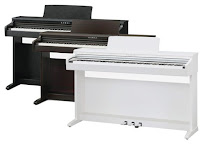 The primary things shoppers are looking for when wanting to purchase a new digital piano is realistic, responsive piano weighted key action, expressive, organic acoustic piano tone with a smooth, wide dynamic tonal range, and last but not least…responsive pedaling with long, bold piano sustain decay times. Also, to enhance these things it is necessary to send all that great sound through a competent internal speaker system which can bring out a good bass response so the sound is not tinny and artificial, but full with a rich sound coming through. All of the other things a digital piano can do such as offering many other instrument sounds, drum patterns, extensive recording, layering, etc, are secondary in my opinion. Although they can be useful and fun to have, it is really all about the “piano playing experience” that is most important and your ability to grow into the piano instead of growing out of it.
The primary things shoppers are looking for when wanting to purchase a new digital piano is realistic, responsive piano weighted key action, expressive, organic acoustic piano tone with a smooth, wide dynamic tonal range, and last but not least…responsive pedaling with long, bold piano sustain decay times. Also, to enhance these things it is necessary to send all that great sound through a competent internal speaker system which can bring out a good bass response so the sound is not tinny and artificial, but full with a rich sound coming through. All of the other things a digital piano can do such as offering many other instrument sounds, drum patterns, extensive recording, layering, etc, are secondary in my opinion. Although they can be useful and fun to have, it is really all about the “piano playing experience” that is most important and your ability to grow into the piano instead of growing out of it.KAWAI KDP120 KEY ACTION
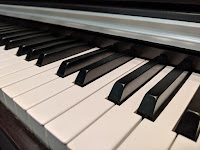 First, it is important to talk about key action which is by far the most important thing you should be concerned about when shopping for a digital piano. Key action includes how the keys move individually or together, the weight of each key, the amount of pressure it takes for the fingers to press the keys down, the amount of time and pressure the keys exhibit in coming back up, the way the keys interact with the piano sound and if the key action under each key has proper electronics under the keys (called key sensors) to allow the piano to have smooth transition in volume when playing lightly or quietly and then when playing harder with more expression and how the piano sound volume and tonal dynamics come out as you are playing.
First, it is important to talk about key action which is by far the most important thing you should be concerned about when shopping for a digital piano. Key action includes how the keys move individually or together, the weight of each key, the amount of pressure it takes for the fingers to press the keys down, the amount of time and pressure the keys exhibit in coming back up, the way the keys interact with the piano sound and if the key action under each key has proper electronics under the keys (called key sensors) to allow the piano to have smooth transition in volume when playing lightly or quietly and then when playing harder with more expression and how the piano sound volume and tonal dynamics come out as you are playing. In its price range the Kawai KDP120 key action called RHC2 is very good for a digital piano in this price range and I was impressed overall. It has a good balance of graded weighted keys with key movement from low to high octaves being not too firm and not too light, and overall a quieter moving key action as compared to some of the competition. Korg and Casio also have very nice key actions and we recommend them as well. The weight and movement of both the black and white keys on the Kawai KDP120 are good which is not necessarily the case with other manufacturers, especially when it comes to the black keys and how they move. Beyond the physical nature of the piano key action are the electronic key sensors under each key. In the past Kawai had a 2-sensor key action which has 2 electronic sensors under each key to sense key repetition.
In its price range the Kawai KDP120 key action called RHC2 is very good for a digital piano in this price range and I was impressed overall. It has a good balance of graded weighted keys with key movement from low to high octaves being not too firm and not too light, and overall a quieter moving key action as compared to some of the competition. Korg and Casio also have very nice key actions and we recommend them as well. The weight and movement of both the black and white keys on the Kawai KDP120 are good which is not necessarily the case with other manufacturers, especially when it comes to the black keys and how they move. Beyond the physical nature of the piano key action are the electronic key sensors under each key. In the past Kawai had a 2-sensor key action which has 2 electronic sensors under each key to sense key repetition.
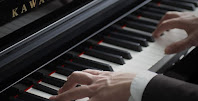 The KDP120 does not have the synthetic ivory & ebony and even though that feature does add to the playing enjoyment for some people, it is not absolutely necessary. Since Kawai builds real acoustic upright and grand pianos then they know what they’re doing in producing high quality piano keys. So as far as I am concerned Kawai has done a very nice job offering a satisfying piano key action in their new KDP120, especially in this price range.
The KDP120 does not have the synthetic ivory & ebony and even though that feature does add to the playing enjoyment for some people, it is not absolutely necessary. Since Kawai builds real acoustic upright and grand pianos then they know what they’re doing in producing high quality piano keys. So as far as I am concerned Kawai has done a very nice job offering a satisfying piano key action in their new KDP120, especially in this price range.
PIANO SOUND
 The next most important thing when shopping for a good digital piano is to pay attention to the piano sound authenticity. For people who do not play piano or have little experience with the actual piano sound of good acoustic pianos then knowing what constitutes a good piano sound can be a daunting task. How do you know if one piano sound is more realistic than other and does it really matter?
The next most important thing when shopping for a good digital piano is to pay attention to the piano sound authenticity. For people who do not play piano or have little experience with the actual piano sound of good acoustic pianos then knowing what constitutes a good piano sound can be a daunting task. How do you know if one piano sound is more realistic than other and does it really matter?So just because the instrument looks like a piano does not mean the piano sound and expression will be good, particularly in the off-name brands like Artesia, Kurzweil, Suzuki, Williams, etc. In fact in some of these cheaper priced brands the tonal dynamics and volume when playing the key action can be choppy and compressed and it may hurt your piano practice when a student is trying to improve in their piano playing skills and abilities. So you need to be very careful in what you finally decide to buy.
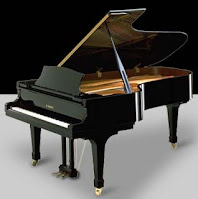 With all this in mind I can tell you from 1st hand experience that the Kawai KDP120 has fairly realistic acoustic piano sound reproduction originating from Kawai acoustic grand pianos. These piano sounds offer good dynamic tonal range (mellow to bright and everywhere in-between) depending on how hard you play on the keys along with smooth volume transitions from very soft to very loud and also everywhere in-between. The piano tones are actual samples/recordings from real Kawai acoustic grand pianos including concert quality, mellow, bright, jazz, pop and and a variety of other choices. With 192 notes of polyphony power there is plenty of room in the piano memory to play complex pieces of music and be able to have a very satisfying result. One of the reasons the piano tones come across so realistically is because Kawai samples all 88-notes individually instead of in groups. In other words some piano companies sample one note and then electronically stretch that note up to the next note and the next note and so on.
With all this in mind I can tell you from 1st hand experience that the Kawai KDP120 has fairly realistic acoustic piano sound reproduction originating from Kawai acoustic grand pianos. These piano sounds offer good dynamic tonal range (mellow to bright and everywhere in-between) depending on how hard you play on the keys along with smooth volume transitions from very soft to very loud and also everywhere in-between. The piano tones are actual samples/recordings from real Kawai acoustic grand pianos including concert quality, mellow, bright, jazz, pop and and a variety of other choices. With 192 notes of polyphony power there is plenty of room in the piano memory to play complex pieces of music and be able to have a very satisfying result. One of the reasons the piano tones come across so realistically is because Kawai samples all 88-notes individually instead of in groups. In other words some piano companies sample one note and then electronically stretch that note up to the next note and the next note and so on.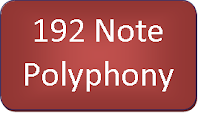
PEDALS
 The three pedals attached to the front bottom of the piano are important, especially the right damper/sustain pedal. Without using the right pedal most songs can sound choppy and much less beautiful. However when a beginner student is learning to play then the right pedal is not important until many months have passed by where that beginner student is ready to use the pedal and learn proper pedaling technique. The other two pedals include the center pedal known as sostenuto pedal which sustains only specific notes and the left pedal is known as the soft pedal which softens the volume on all notes simultaneously whenever the song calls for it.
The three pedals attached to the front bottom of the piano are important, especially the right damper/sustain pedal. Without using the right pedal most songs can sound choppy and much less beautiful. However when a beginner student is learning to play then the right pedal is not important until many months have passed by where that beginner student is ready to use the pedal and learn proper pedaling technique. The other two pedals include the center pedal known as sostenuto pedal which sustains only specific notes and the left pedal is known as the soft pedal which softens the volume on all notes simultaneously whenever the song calls for it.The damper/sustain pedal (right pedal) is the one which is used almost all the time. The left soft pedal is used much less often by beginners to intermediate players, and the middle sostenuto pedal is rarely used by anyone these days as it has almost become a decoration rather than a useful pedal function…although in some classical pieces for some players, it is useful. But it’s really all about the right damper/sustain pedal and Kawai does a very good job reproducing that pedal experience with a “grand feel” pedal system which tries to simulate the actual feel and weight of the pedal when pressing down on it and which also offers half-damper pedaling.
GENERAL FEATURES AND “PIANO REMOTE” APP
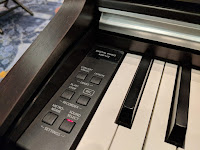

 When it comes to the non-acoustic piano sounds and functions in the KDP120 there are many and they are all pretty good. There are realistic instrument tones including electric pianos, organs, choirs, harpsichord, strings, etc and you can layer (combine) any two sounds together such as strings and grand piano or harpsichord and choir just to name a few. You can also digitally transpose the key you are in and play the song in any key which can be useful when singing along and getting into your vocal range.
When it comes to the non-acoustic piano sounds and functions in the KDP120 there are many and they are all pretty good. There are realistic instrument tones including electric pianos, organs, choirs, harpsichord, strings, etc and you can layer (combine) any two sounds together such as strings and grand piano or harpsichord and choir just to name a few. You can also digitally transpose the key you are in and play the song in any key which can be useful when singing along and getting into your vocal range.
The KDP120 also has some useful reverb (echo) effects which accentuate the piano tones by adding to the realism like you would hear in a bigger room or hall where there is natural echo/reverb to give the piano tone a larger effect. This kind of thing is very nice to have and even though other digital pianos may have these reverb effects doesn’t mean they are actually any good because there are different qualities.
All of these nuanced organic elements of an acoustic grand piano are in the Kawai KDP120 and those individual features are adjustable in the KDP120 as well. In fact, Kawai also has an iOS/iPad/Android app they call “Piano Remote” which will allow you to easily see and adjust most of the functions in the piano along with these natural organic piano elements. You can customize the piano sounds to your liking by adding more strength to the effect or taking away some of the strength of that effect. Using the iPad for the touch interface to control these things (along with the key touch sensitivity and other features) makes using the “Virtual Technician” a breeze and then anyone can do it…even a 3 year old:).
DIGITAL RECORDER & SONG PLAYBACK
 With regard to learning how to play a piano the KDP120 does have some useful features which helps the student learn to play better and also helps the recreational player (who can already play piano) to have a more interactive and fun playing experience. One of the features that can be useful is a digital recorder which can store 3 songs internally in the piano. It’s a very simple recorder where you just press the record button, play your song, stop the recording, and then play back your song…simple. Some digital pianos have more extensive recording functions with separate tracks and separate sounds that can be recorded on each track.
With regard to learning how to play a piano the KDP120 does have some useful features which helps the student learn to play better and also helps the recreational player (who can already play piano) to have a more interactive and fun playing experience. One of the features that can be useful is a digital recorder which can store 3 songs internally in the piano. It’s a very simple recorder where you just press the record button, play your song, stop the recording, and then play back your song…simple. Some digital pianos have more extensive recording functions with separate tracks and separate sounds that can be recorded on each track. When you play back your recording you can also play “live” over it to accompany yourself if you wish which can be fun. Included with the recorder practice function is a full set of songs from the popular Alfred piano method series book level 1A and book level 1B along with songs from the Burgmuller, Czerny, and Beyer instructional books. These songs can help you understand what they should sound like when looking at the lesson books (optional) and you can slow down or speed up the playback of the songs while you are learning to play them.
When you play back your recording you can also play “live” over it to accompany yourself if you wish which can be fun. Included with the recorder practice function is a full set of songs from the popular Alfred piano method series book level 1A and book level 1B along with songs from the Burgmuller, Czerny, and Beyer instructional books. These songs can help you understand what they should sound like when looking at the lesson books (optional) and you can slow down or speed up the playback of the songs while you are learning to play them.4-HAND PRACTICE MODE
 Also, sometimes you may want two people to learn the same song and play at the same time, especially younger students. So you you have kids then if two of them who are learning to play the same things can actually play at the same time on the KDP120 by setting a function to electronically split the 88 keys in half having two 44-note keyboards and then you can have one person play on the left side of the piano on the first 44 keys and then the other student play on the right side using the other 44 keys. the right pedal controls sustain for the right side keys and the left pedal controls sustain for the left 44 keys.
Also, sometimes you may want two people to learn the same song and play at the same time, especially younger students. So you you have kids then if two of them who are learning to play the same things can actually play at the same time on the KDP120 by setting a function to electronically split the 88 keys in half having two 44-note keyboards and then you can have one person play on the left side of the piano on the first 44 keys and then the other student play on the right side using the other 44 keys. the right pedal controls sustain for the right side keys and the left pedal controls sustain for the left 44 keys.CONCERT MAGIC TRAINING FEATURE
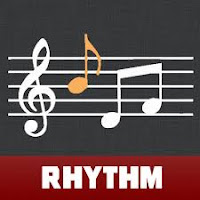 I need to mention that Kawai has an exclusive learning feature in the KDP120 that no other digital piano company offers that specifically targets rhythm and timing training in beginner kids and adults and is actually quite fun for any person to use. Kawai calls this feature “Concert Magic.” What Kawai has done is taken 40 popular well-known tunes over the years such as “Twinkle twinkle little star, Mary had a little lamb, O when the Saints, Row row row your boat, Yankee Doodle, Silent Night, Jingle Bells, The Entertainer, Fur Elise, Blue Danube, and many others and put those full piano songs into the memory of the KDP120. Many people of all ages (in the US) know these songs fairly well which also helps this system work well.
I need to mention that Kawai has an exclusive learning feature in the KDP120 that no other digital piano company offers that specifically targets rhythm and timing training in beginner kids and adults and is actually quite fun for any person to use. Kawai calls this feature “Concert Magic.” What Kawai has done is taken 40 popular well-known tunes over the years such as “Twinkle twinkle little star, Mary had a little lamb, O when the Saints, Row row row your boat, Yankee Doodle, Silent Night, Jingle Bells, The Entertainer, Fur Elise, Blue Danube, and many others and put those full piano songs into the memory of the KDP120. Many people of all ages (in the US) know these songs fairly well which also helps this system work well.
CONNECTIVITY
 As far as connectivity on this model goes, Kawai offers a lot including standard MIDI in/out connections, USB output to device connection (to computers, tablets, cell phones, etc), and new Bluetooth MIDI connectivity to connect with music and educational apps on your tablet using wireless Bluetooth. This is not Bluetooth audio but is Bluetooth MIDI so that when you press the keys on the piano while connected to a device like iPad or computer using educational apps and programs, then the Bluetooth app will recognize that input of your keyboard playing and respond to your playing with instant feedback depending on the app or program.
As far as connectivity on this model goes, Kawai offers a lot including standard MIDI in/out connections, USB output to device connection (to computers, tablets, cell phones, etc), and new Bluetooth MIDI connectivity to connect with music and educational apps on your tablet using wireless Bluetooth. This is not Bluetooth audio but is Bluetooth MIDI so that when you press the keys on the piano while connected to a device like iPad or computer using educational apps and programs, then the Bluetooth app will recognize that input of your keyboard playing and respond to your playing with instant feedback depending on the app or program.
INTERNAL SPEAKER SYSTEM
 When it comes to the KDP120 speaker system Kawai has a 40 watt 2-speaker sound system which produces a bigger, better tone through the piano than the previous model. I have heard it in person and am impressed with it and it can easily fill up a small to medium size room. It does not sound like a grand piano but that’s OK…it does sound good enough for most people. The KDP120 puts out 40 watts of audio which is good in its price range although the popular lower priced Casio PX-870 also puts out 40 watts of power going through 4 speakers instead of the 2 speakers in the KDP120.
When it comes to the KDP120 speaker system Kawai has a 40 watt 2-speaker sound system which produces a bigger, better tone through the piano than the previous model. I have heard it in person and am impressed with it and it can easily fill up a small to medium size room. It does not sound like a grand piano but that’s OK…it does sound good enough for most people. The KDP120 puts out 40 watts of audio which is good in its price range although the popular lower priced Casio PX-870 also puts out 40 watts of power going through 4 speakers instead of the 2 speakers in the KDP120.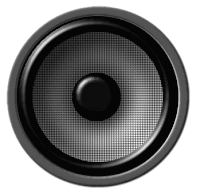
The Kawai company’s next furniture cabinet model up is called the CN201 and that 40 watt digital piano costs $2299 internet price, although its features are vastly upgraded as compared to the KDP120 with a much better piano sound chip and key action. But you have to spend a lot more money (as I mentioned earlier) to get it. The KDP120 is energy efficient over past models in that it only uses 11 watts of power when playing at the same levels. Plus, Kawai has now has a new stereo headphone feature which optimizes any pair of good stereo headphones for high definition spatial positioning to give you the feeling that the piano sound is coming all around your head instead of directly into the ears like traditional digital pianos do.
THE BOTTOM LINE
 The bottom line is this…in my opinion Kawai has produced a much better digital piano than past Kawai models (especially as compared to the Yamaha Arius pianos) and all for only $1499 internet price in offering an upgraded triple sensor key action with a more natural key movement, expressive dynamic stereo piano tone, responsive pedaling, and digital features. Yes, there are always some more or different features a person could want on their digital piano which the KDP120 may not have, But the KDP120 has enough things to satisfy many piano students and players. I do like the new matte black, dark rosewood, and matte white finishes and they look attractive with an all newly designed cabinet along with an included comfortable matching padded bench.
The bottom line is this…in my opinion Kawai has produced a much better digital piano than past Kawai models (especially as compared to the Yamaha Arius pianos) and all for only $1499 internet price in offering an upgraded triple sensor key action with a more natural key movement, expressive dynamic stereo piano tone, responsive pedaling, and digital features. Yes, there are always some more or different features a person could want on their digital piano which the KDP120 may not have, But the KDP120 has enough things to satisfy many piano students and players. I do like the new matte black, dark rosewood, and matte white finishes and they look attractive with an all newly designed cabinet along with an included comfortable matching padded bench.
At the end of the day there are choices in this price range from all the good digital piano manufacturers including Kawai, Roland, Yamaha, Casio, and Korg who produce the better digital pianos. But with this newer offering from Kawai I think they have certainly risen further up the ladder of quality pianos in a lower price range. It is important to note that the KDP120 is still considered somewhat of an “entry-level” digital piano because there are definitely more realistic key actions and more authentic piano sounds out there in other brands & models, but you will likely pay a lot more money for them as well.
ALTERNATIVE DIGITAL PIANOS
If you want more info on new digital pianos and LOWER PRICES than internet discounts, please email me at tim@azpianowholesale.com or call direct at 602-571-1864.
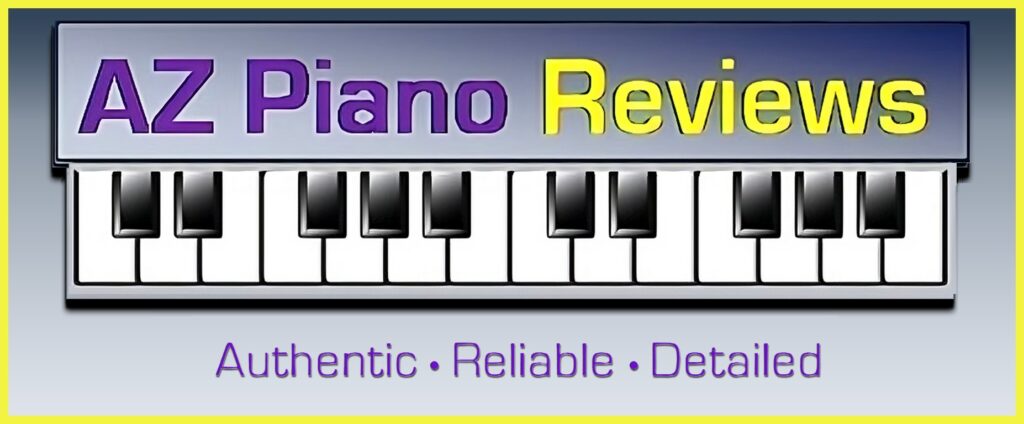








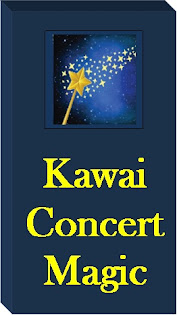


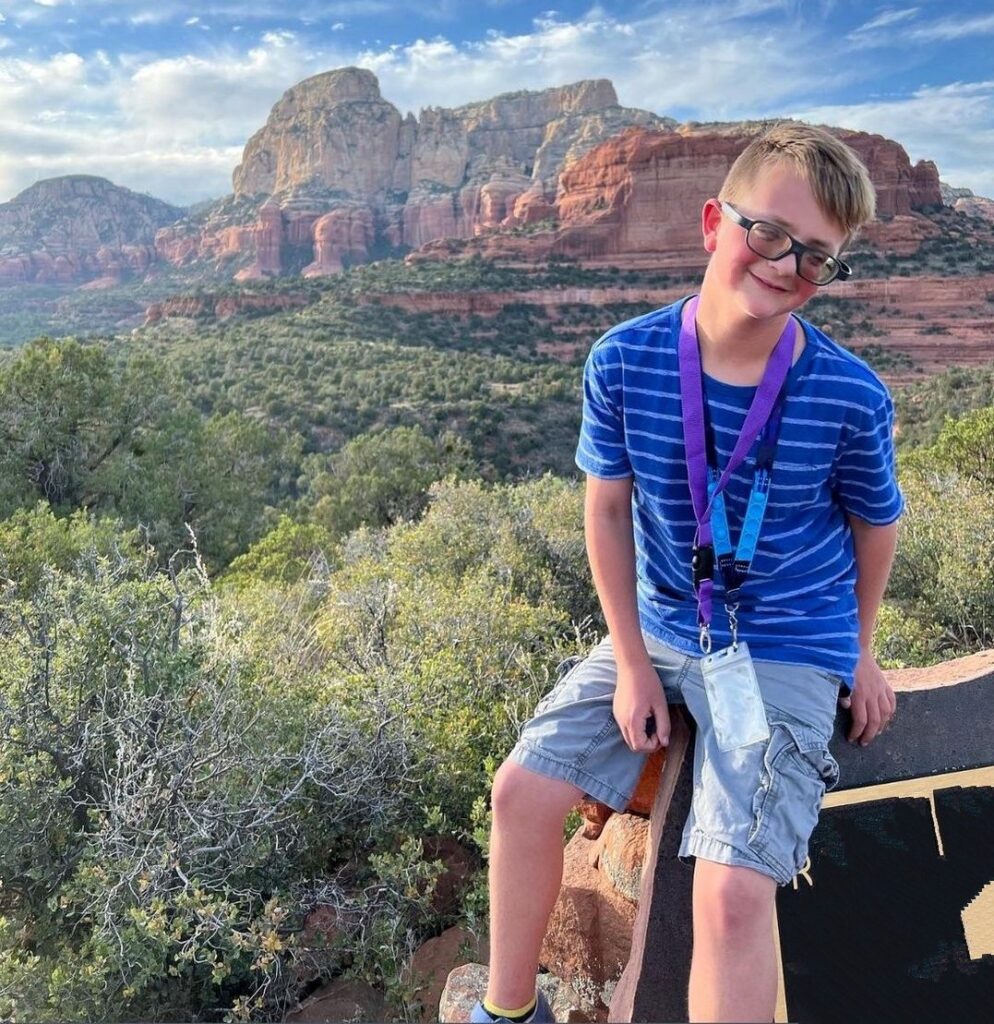
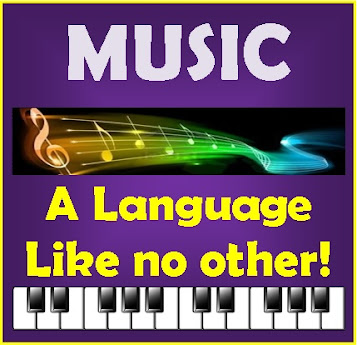

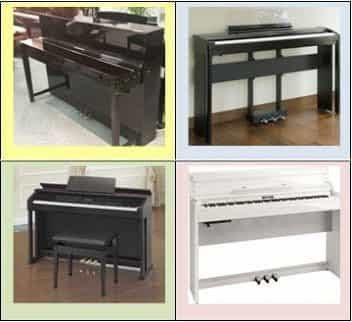
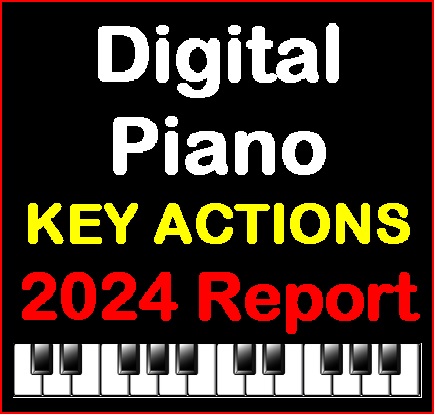

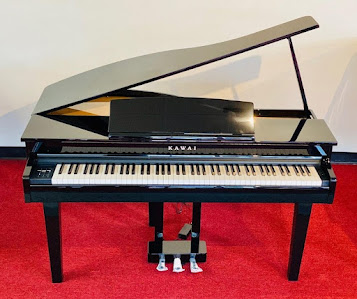
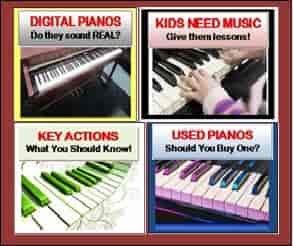
hello Tim, this is a great review! I'm looking for a piano for my daughter to begin this music adventure and have narrowed down the search to Kawai KDP110 and Roland F140R. Most of the sales people in piano shops recommend Roland over this Kawai, but I'm having impression Kawai sound is much more natural and more designated to classical music. Roland on other hand has more "fun factor" with accompaniament and variety of sounds. What you think would be better to begin a classical piano learning path?
All the best, Lukasz.
Hi Tim! Great review as usual.
There are still some units of the older model, the KDP90, also a very good piano, that can be bought at a discount price. You know both models well. In your opinion, apart from the improved key action, what are the most important improvements of the kdp110 over the kdp90, and are they worth to pay the price difference? Thank you!
Hi,
What's the difference between KDP110 and Kawai CN17? Is RHC II only differs in triple sensor than older RHC? Any other differences? Thanks.
What's better kawai kdp 110 or yamaha ydp 163?
without question…the new Kawai KDP110. Much more expressive key action, piano sound, and pedaling than the Yamaha in my opinion.
Can you also use midi files to play with your favourite song?
This comment has been removed by the author.
When i can buy both. Which one would you recommend? The c1 air or the kawai kdp110.
Thanks in advance
Hi Tim. I’m a total beginner and looking for a digital piano to learn on. I’m looking for something that I wont “grow out of” as I progress. Right now I’m only interested in learning to play classical (Beethoven, Bach, Chopin, Mozart, etc.). I’ve been trying to research mainly the actions as that’s what I think would be most important. I’ve been looking at the Kawai KDP-110, Roland RP-102, Casio AP-270, Casio PX-870, Yamaha YDP-143. I’d also be open to any other suggestions that I may not have listed. Any help would be greatly appreciated! Thanks!
Between Kawai KDP110,CN17 which one is the lates model and what are their difference.
Hi Eran, am in the situation as you and looking to buy a piano for my son. we narrowed it down to the Korg C1 Air & Casio PX 870. I then spoke with a music specialist who then brought the Kawai into the mix saying it was better sound quality. What did you end up buying please ?
$1000 question: Casio PX870 Or KDP110??
I think you have put up a very honest and impeccably good review which helped me in my quest to find the right digital piano, I wish I were in th USA and could have purchased directly from you. I'm based out in Asia though,. I wanted to say that it's been lucky to have read your review hear. God bless ya 🙏. And a very big thank you. –Paul